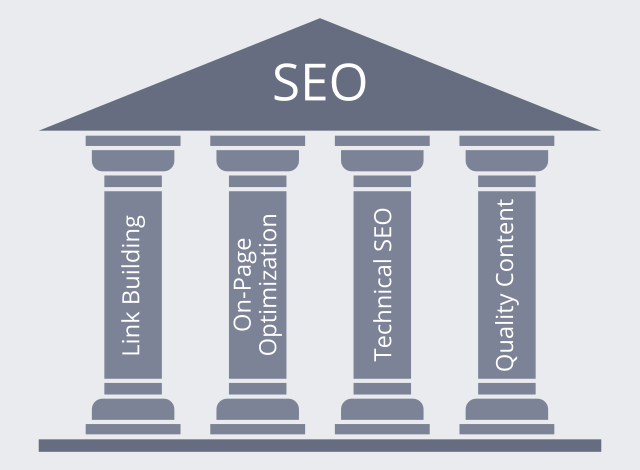Social media may have been the star of the digital marketing scene in recent times, but reports of SEO’s demise are greatly exaggerated. Effective search engine optimization can still drive plenty of profitable traffic to a website, but it needs to be approached correctly. What do you need to consider when developing a successful modern strategy?

1. Link Building
Links have always been the foundation of the Google algorithm. Although the specifics have changed over time, a good link will always be a positive for your ranking. But what should you be looking for when building links?
- Always strive for links that appear natural and freely given by the source site. If your link looks as if it’s been bought or traded, it will be downgraded in value, or may even work against you in extreme cases.
- Links from highly trafficked sites are always preferable. Not only will these links tend to have a greater algorithmic impact, they’ll also send you traffic directly.
- Your incoming links should have a wide range of anchor texts (the text used within the link itself). Aim for a mixture of descriptive keywords and phrases: generic terms such as “click here,” website addresses, and longer sentences which describe your page content. Also, mix it up by including links based around images rather than text.
- Your link profile should be as diverse as possible. Aim for links from sites with high and low traffic, closely related themes and more general blogs, and from a variety of countries and organizations. The greater the mix, the more natural your profile will look, and the greater the impact your best links will have.
2. On-Page Optimization
On-page optimization is all about getting your page’s ducks in a row to leave the algorithm with no doubt about its theme. Although it’s nowhere near the make-or-break factor it once was, it’s still vital.
- Optimize your page title and meta description so that they are readable, interesting, and accurately descriptive, and also include your target keywords.
- Structure your content well, using headings and subheadings where appropriate, again including relevant keywords where they naturally fit.
- Use image alt attributes to describe the image content accurately, while also adding the keywords for which you want to rank.
- Tweak your content to naturally include your main terms and a good spread of related phrases. However, never do this at the expense of readability.
- Add links to other pages on your website and to respected external sites, where they fit the text and add value for the user.
3. Technical SEO
Technical SEO is in some ways the ugly duckling of the optimization family. It’s rarely exciting, but it provides the foundation on which other parts of the discipline can build. In essence, it means ensuring your site is easily understood by the search engine algorithm, with no technical glitches or confusion to trip the spiders up. Here are the most important things to consider.
- Identify and remove as much content as possible that’s duplicated across multiple pages.
- Ensure that several different URLs can’t reach the same page. That is an easy trap to fall into when the URL is parsed by your website software to build a page from database entries.
- Check that your pages load quickly and reliably with no server errors, even under heavy load. Google’s PageSpeed Insights tool and PingDom’s Website Speed Test can help you identify performance bottlenecks and improvement opportunities.
- Ensure that your site works appropriately across a wide range of devices. Google now actively demotes sites which offer a poor mobile experience.
- Use a broken link checker to track down and fix broken internal and external links. Broken links send poor quality signals to search engines, implying sloppy maintenance and a frustrating user experience.
4. Quality Content
The final part of the optimization jigsaw is high-quality content. Search engines strive to direct users to genuinely useful sites, and if your content is poor, you won’t fit this criterion. Not only that, but high-quality content increases user engagement, and this feeds directly back into the ranking system via tracking through Google’s advertising, analytics, and social media platforms.
- Make your content as unique as possible. While it’s difficult to create something original in a crowded market, publishing rehashed material isn’t going to make you rise above your competitors.
- Make your content genuinely useful, entertaining, or otherwise attractive. Think beyond the search engine spiders – user satisfaction should be your prime aim. Content that doesn’t engage or convert in some way is worth virtually nothing.
- Make sure your content is easily readable and clearly presented. Your visitors immediately need to recognize that they’ve found what they’re seeking. If they don’t, they’ll hit the back button, inflating your bounce rates. Google will notice this and lower your rank accordingly.
Modern online marketing offers countless ways of driving traffic to a website, but search engine optimization remains one of the most powerful and cost-effective. But it’s not something you can take for granted or approach half-heartedly. Pay attention to these four pillars, and you’ll be giving your SEO efforts an essential underpinning for profitable success.
Older Post
Newer Post
- October 23, 2019
- By Peter
